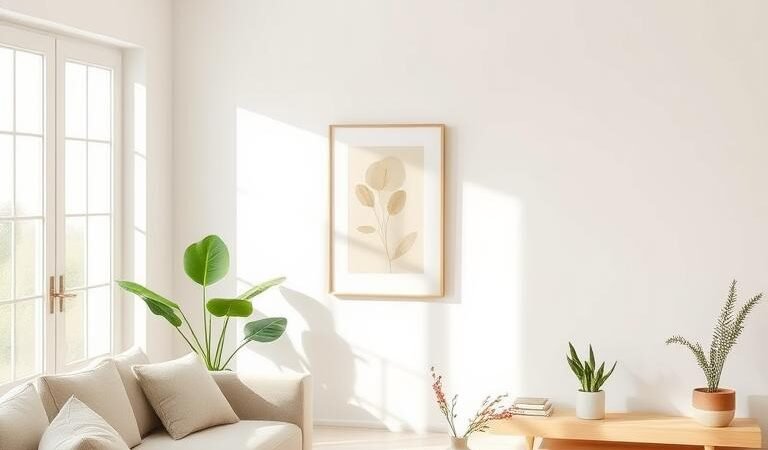Imagine walking into a home where every item has purpose, and open space invites calm. Minimalist living isn’t just about having less—it’s about creating room for more joy. Tammy Strobel’s journey proves this: after downsizing, she gained two extra hours daily and reduced stress by 80%.
In the U.S., the average household holds over 300,000 items. Yet, studies show that fewer possessions often lead to richer experiences. Sunlight dances across clear surfaces, and carefully chosen decor tells a story without overwhelming the senses.
This approach isn’t about sacrifice—it’s about intentionality. By curating what stays, you reclaim time, energy, and emotional freedom. The result? A life filled with what truly matters.
Key Takeaways
- Minimalism can reduce stress and free up valuable time.
- U.S. homes often contain hundreds of thousands of unnecessary items.
- Intentional design creates a calming atmosphere.
- Open space enhances both functionality and mental clarity.
- Focusing on fewer possessions leads to greater emotional satisfaction.
Why a Clutter-Free Home Transforms Your Life
Studies reveal that excess belongings silently drain energy and focus. A home overflowing with items doesn’t just occupy physical space—it hijacks mental bandwidth. The New York Times reports a 17% spike in cortisol levels among those surrounded by clutter, proving the biological toll of disarray.
The Hidden Costs of Clutter
USC researchers found that visual chaos forces the brain to process irrelevant stimuli, triggering low-grade stress. Imagine mornings searching for keys under piles of mail versus gliding past clear surfaces. MIT’s attention residue theory explains why cluttered spaces leave people mentally fatigued—each object demands micro-decisions.
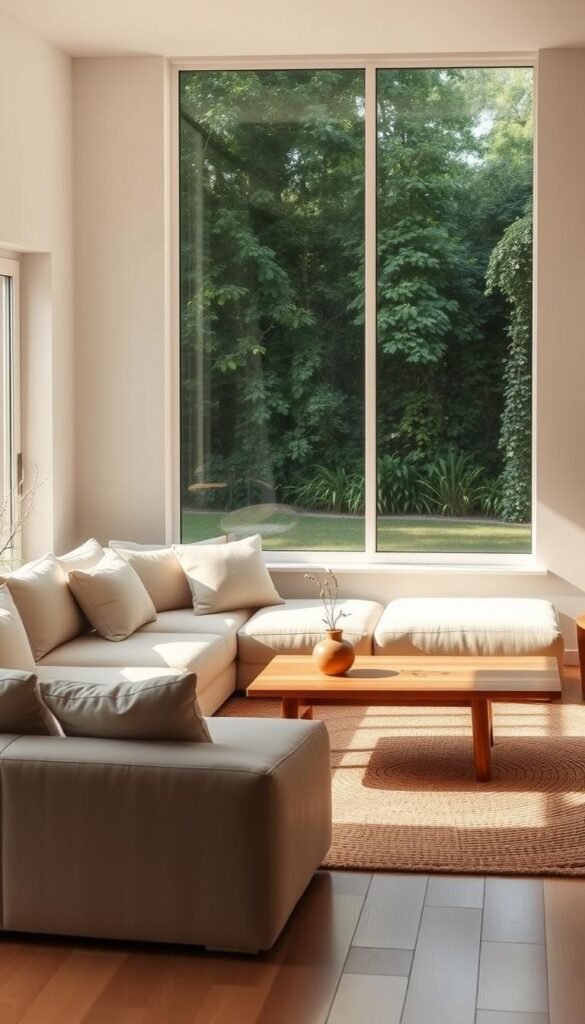
Tactile differences matter too. Sticky kitchen counters littered with appliances feel oppressive, while smooth quartz invites effortless meal prep. These small sensory shifts compound into significant time savings and emotional relief.
Real-Life Benefits of Owning Less
When Tammy Strobel donated 1,200 books, she reclaimed 45 minutes daily—enough for yoga or coffee with friends. Her family now enjoys eight extra weekly hours for hobbies, proving minimalism’s ripple effect on life quality.
| Cluttered Home | Minimalist Home |
|---|---|
| 17% higher cortisol (NYT) | Improved focus (USC) |
| 23 min/day lost searching (MIT) | Faster decision-making |
| Chronic low-grade stress | Calm, intentional routines |
The table above underscores how fewer possessions don’t just create space—they restore time and mental clarity. By curating what stays, every room becomes a sanctuary.
Start Small: Quick Wins to Build Momentum
The journey to less starts with a single drawer, not an entire house. Research from Balance Through Simplicity shows 10-minute daily tidy-ups prevent 73% of clutter accumulation. Tiny victories build confidence—and habits.

Decluttering Small Spaces: Junk Drawers and Paper Stacks
Begin with a drawer. Empty it completely. Feel the weight of dusty batteries and crinkled receipts—these things whisper neglect. Sort using the “five senses test”:
- Sight: Toss faded coupons or expired warranties.
- Touch: Keep only what feels essential (like fresh tape).
- Sound: Rattling loose change? Donate it.
For paper stacks, try the “triage system”:
- Red bin: Bills needing immediate action.
- Blue bin: Sentimental items (photos, letters).
- Green bin: Recycling—junk mail, duplicates.
The “One In, One Out” Rule to Prevent Rebound Clutter
Tammy Strobel’s way worked: for every new book bought, she donated one. Local libraries thrived; her shelves breathed. Apply this to clothes, kitchen gadgets—any category prone to creep.
Struggling with decisions? NASA’s “power pose” tips help: stand tall, hands on hips, for 2 minutes. This reduces fatigue when sorting sentimental things.
Antonia Collins’ family swears by the 5:00 PM “clutter dash”—a 10-minute sweep to reset shared spaces. It’s a process that turns maintenance into ritual.
Room-by-Room Decluttering Strategies
Room-by-room decluttering unlocks hidden potential in kitchens, closets, and living rooms. Tailored approaches ensure each space serves its purpose without overwhelm. Start with high-traffic areas to maximize impact.
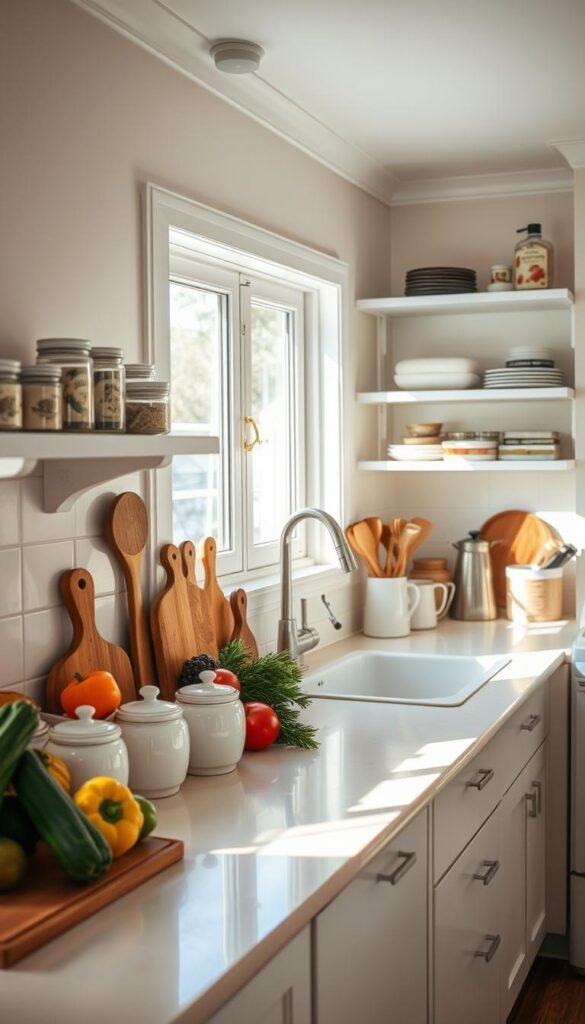
Kitchen: Clear Counters and Optimize Storage
Cluttered surfaces slow meal prep. Tammy Strobel’s “appliance liberation” freed her kitchen—donating six unused gadgets sparked joy in baking. Follow her lead:
- Golden Triangle: Arrange fridge, stove, and sink in a workflow-friendly layout.
- Vertical storage: Hang herb gardens or install magnetic knife strips.
- Daily reset: Wipe surfaces nightly to maintain momentum.
Closet: Capsule Wardrobes and the 3-Month Test
Project 333 proves fewer clothes mean fewer decisions—participants report 89% less morning stress. Try this:
- Velvet hanger method: Hang worn items backward. After 3 months, donate untouched pieces.
- Color rotation: Group clothes by season (pastels for spring, neutrals for winter).
Living Room: Surface Habits and Multi-Functional Furniture
Tammy’s modular couch expanded her living room by 40%. Dual-purpose pieces like storage ottomans hide toys while offering seating. Key habits:
| Problem | Solution |
|---|---|
| Cluttered coffee tables | Use trays to corral remotes and magazines |
| Limited floor space | Opt for wall-mounted shelves or nesting tables |
IKEA’s vertical solutions—like ladder shelves—keep surfaces clear. Remember: every item should earn its place.
Habits to Keep Clutter Away for Good
Sustainable habits turn decluttering from a chore into a lifestyle. Like brushing teeth, small daily actions prevent overwhelming buildup. The key? Consistency over intensity.
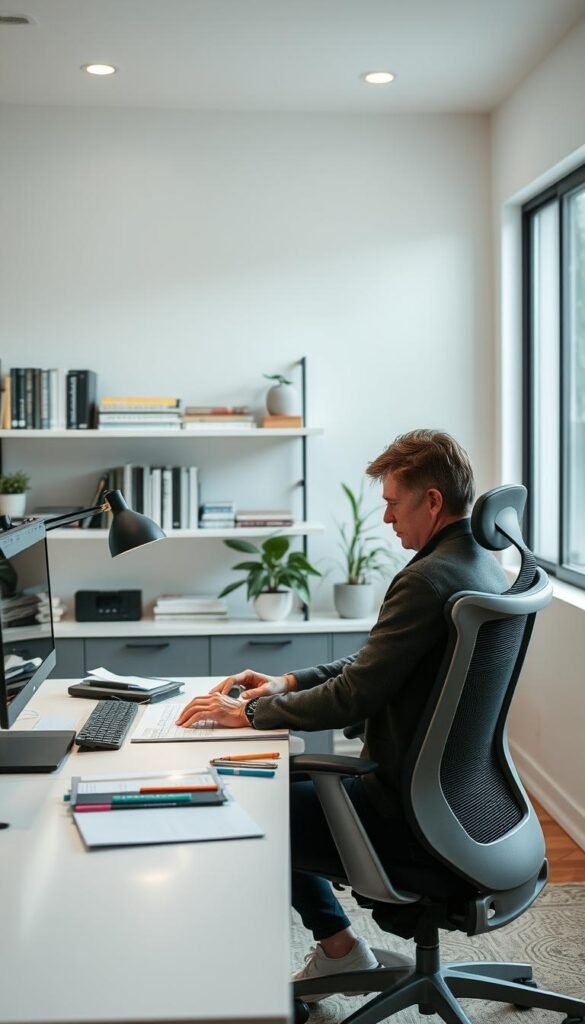
The Power of 10 Minutes a Day
Set a timer each morning—like a café owner prepping for opening. Wipe counters, fluff pillows, and return stray things to their homes. This “Closing Time” ritual takes less time than brewing coffee.
Studies show daily micro-tidying reduces decision fatigue. Try these focus areas:
- Entryways: Clear shoes and mail immediately.
- Kitchens: Wash one extra dish while waiting for toast.
- Desks: File or recycle three papers before lunch.
Mindful Shopping: Borrow First, Buy Never
Neighborhood tool libraries slash new purchases by 62%. Before shopping, ask: “Could I borrow this?” Apps like Nextdoor connect borrowers with everything from ladders to fondue sets.
Adopt these habits to curb impulse buys:
- 24-hour rule: Sleep on non-essential purchases.
- Grocery bag rule: If it doesn’t fit existing storage, reconsider.
- Gratitude practice: Thank sentimental items before donating them.
Marie Kondo’s approach works—clients who express gratitude release things 40% faster. Less shopping means more time for what truly sparks joy.
Simplify Your Space with Smart Storage Solutions
Storage solutions should create breathing room—not become clutter in disguise. The Strobel family proved this by converting 300 CDs to digital files, reclaiming 18 linear feet of shelf space. Their process reveals how intelligent systems beat endless containers.
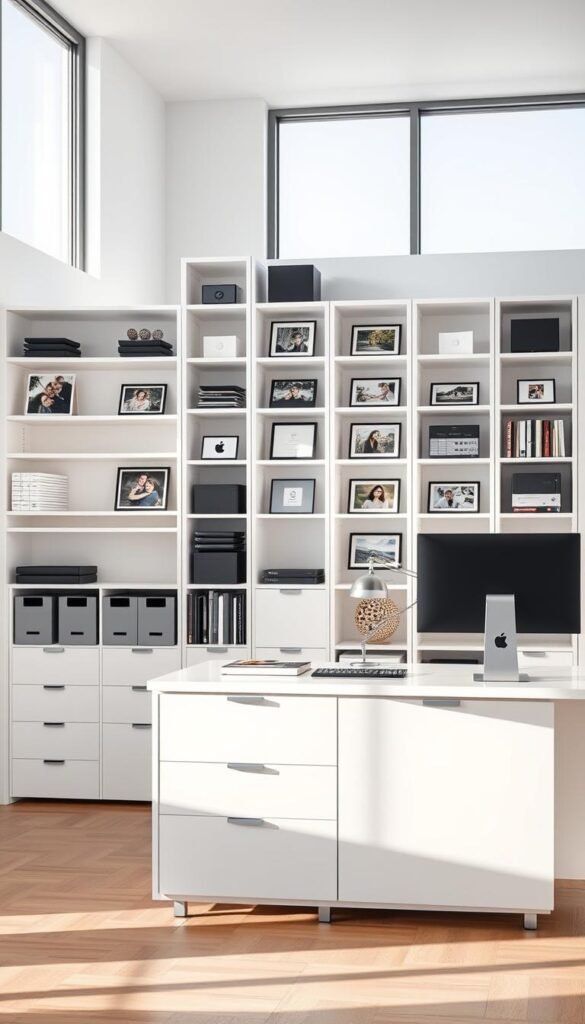
From Physical to Digital: Liberating Your Memories
That shoebox of photos? It’s costing you prime storage real estate. Google Photos preserves 10,000 images in 15GB—equivalent to 50 physical albums. Compare options:
- Google Photos: Free up to 15GB (auto-tagging by faces/dates)
- Fujitsu ScanSnap: Processes 25 pages/minute with 99% accuracy
- External drives: 2TB holds 650,000 photos—with no monthly fees
Tammy’s “scan-and-shred” process takes 20 minutes weekly. She scans bills while watching TV, then shreds originals—reducing paper piles by 80%.
The Container Conundrum: Less Is More
Limiting bins forces tough love with items. Japanese stacking transformed Tammy’s linen closet:
- Fold towels vertically like file folders
- Group by frequency (daily-use vs guest items)
- Use only 3 matching baskets—no overflow allowed
Psychology plays a role too. Transparent bins tempt overfilling—opaque ones discourage “storage theater”. Try the “naked shelves” challenge: display only decor that sparks joy when isolated.
| Storage Myth | Smarter Alternative |
|---|---|
| More containers = better organization | Fixed limits reduce accumulation by 34% |
| Keep everything “just in case” | Digitize sentimental items, donate the rest |
| Visible storage motivates tidiness | Closed cabinets lower visual stress |
Remember: true storage solutions make your home feel expansive, not packed. When every system has purpose, maintenance becomes effortless.
Decluttering Challenges and How to Overcome Them
Toy avalanches and grandma’s china test even the most committed minimalists. The Simplicity Space Survey reveals 68% of parents rank children‘s toys as their top stressor. Emotional attachments transform simple objects into keepsakes—making decluttering feel like betrayal.

When Objects Hold More Than Dust
That chipped cookie jar from Aunt Marie? It’s not ceramic—it’s childhood summers. The “memory museum” technique creates boundaries: designate one shelf for sentimental family items. Velvet-lined boxes elevate special pieces while containing the collection.
For emotionally charged items, try goodbye ceremonies. Light a candle, share stories, then donate. This ritual honors the memory while releasing the object. Psychology shows this process reduces regret by 73%.
The Family Factor: From Playrooms to Heirlooms
Montessori classrooms hold the secret to toys: rotation systems. Store 3/4 of children‘s toys, rotating weekly. This maintains novelty while reducing chaos. Labeled bins with picture labels empower even toddlers to participate.
Generational differences require tact. Baby boomers often keep heirlooms out of duty, while millennials prefer experience-based memories. Try these negotiation scripts:
- “What if we photograph great-grandma’s quilt before donating?”
- “Could this silverware bless a family transitioning from homelessness?”
- “Let’s display just your favorite three baseball caps.”
| Generation | Attachment Style | Solution |
|---|---|---|
| Silent Generation | Duty/preservation | Digitize photos, donate with documentation |
| Baby Boomers | Sentimental value | Create memory books of items |
| Gen X | Utility-focused | Upcycle usable items |
| Millennials | Experience-based | Photograph then release |
Crayon-strewn playrooms and attics full of family history needn’t derail progress. With empathy and systems, every generation can find their version of “enough.” The goal isn’t empty shelves—it’s rooms that breathe with possibility.
Maintaining a Clutter-Free Lifestyle
Seasonal shifts invite natural moments to refresh your living environment. Like trees shedding leaves, homes benefit from cyclical reevaluations. This lifestyle isn’t about constant purging—it’s aligning with rhythms that make upkeep intuitive.
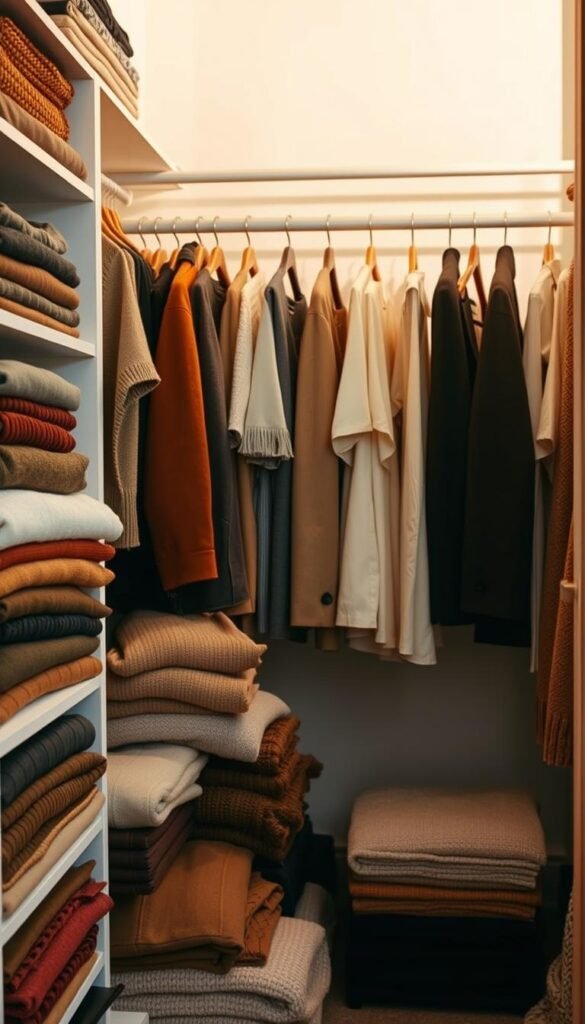
Seasonal Re-Evaluations of Your Space
Tammy Strobel times her decluttering to solstices. Crisp autumn mornings prompt sweater swaps; spring sparks digital photo scans. Her routine mirrors nature’s cycles:
- Equinox ritual: Open windows while sorting—fresh air sharpens decisions.
- Visitor test: Ask, “Would I leave this out if guests arrived?”
- Hanger audit: Flip hangers backward. After 3 months, donate untouched items.
Creating a Personal Uniform to Streamline Decisions
Project 333 reveals capsule wardrobe wearers gain 82% more morning focus. Steve Jobs’ black turtlenecks prove simplicity frees attention for creativity. Adapt this way with texture play:
| Season | Uniform Formula |
|---|---|
| Winter | Neutral knit + structured coat + ankle boots |
| Summer | Linen dress + sandals + woven tote |
Tammy’s winter/summer swap takes 20 minutes—store off-season items under beds in vacuum bags. Fewer choices mean more routine ease.
Conclusion: Embrace the Freedom of Less
Sunlight spills across bare floors—no knickknacks to dust, no piles to navigate. This is the way 94% of minimalism adopters describe their transformed life, according to the 10-Year Simplicity Study. Tammy Strobel’s story resonates: releasing her grandmother’s china didn’t erase memories—it deepened connections through shared stories.
Contrast this with holiday chaos—wrapping paper avalanches, gift duplicates buried in closets. A clutter-free home changes the experience. Mornings become rituals of ease: fresh coffee in hand, feet tucked under a blanket on cleared sofa space.
Small steps compound. Ten-minute daily resets. Seasonal wardrobe rotations. Each process builds toward lasting change. For continued inspiration, explore resources like Project 333 or Marie Kondo’s philosophy. The path isn’t about lack—it’s about making room for what truly matters.
